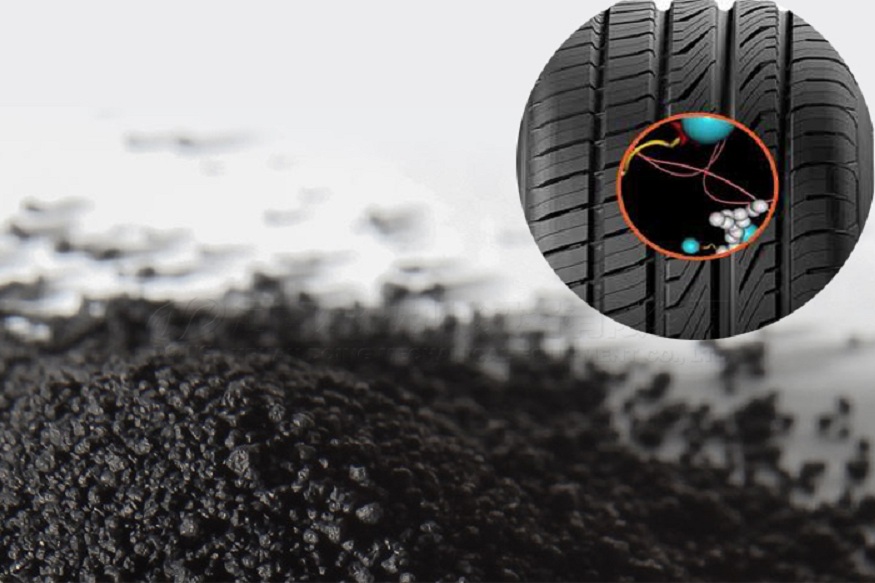
Carbon black is an important industrial ingredient which is a vital component of many global production processes. This fine, powdery material is almost pure elemental carbon with a complicated structure that results from the thermally decomposed or incomplete burning of hydrocarbons. Over the previous decades, carbon black has become essential to many sectors, from polymers and coatings to printing inks, automobile tires, and many others. Learning about the carbon black production in other sectors (especially tire) and the alternative, sustainable carbon black like pyrolytic carbon-black and tyre carbon black manufacturers aids in understanding how the essential component is used.
The Principles of Manufacturing Carbon Black for Tires
To make carbon black for tire applications, particles are produced with certain qualities by complex industrial procedures. This technique uses a feedstock oil, usually formed from petroleum, introduced into a high temperature reactor where it is partially burned under controlled conditions. Once made, the carbon particles are collected, processed and turned into pellets which can be transported and used in further industrial processes.
Carbon Black’s Impact on Tire Safety and Performance
Carbon black is an essential elemental functional element that increases performance and safety features on one of tires’ most important components, and it is used in the manufacture of tires for use beyond just coloring. Particles of carbon black are added to the rubber composition to increase the strength of the polymer matrix, improve abrasion resistance, and extend tire life. Tires operate cooler due to the material’s exceptional heat transfer capabilities, significantly reducing the likelihood of blowouts and enhancing overall safety.
The complex network created by the molecular interaction of carbon black and rubber polymer raises tensile strength and modulus while still preserving elasticity necessary for good tire operation. Different grades of carbon black are chosen based on the distinct tire component performance requirements. Sidewall compounds can use carbon black of various types that behave better with flex resistance and environmental protection whereas the grades used in the tread compound is mainly for exceptional traction and wear resistance.
For producers of carbon black, water management is yet another environmental concern. The production technique commonly makes use of huge amounts of water for cooling and pollutants control, and the wastewater this is produced needs to be dealt with to dispose of impurities earlier than it may be launched. In order to lessen water utilization and the impact on the surroundings, leading producers have created closed-loop water structures and complex treatment technologies.
Alternative Sustainable: Pyrolytic Carbon Black
For some applications, pyrolytic carbon black shines as a viable, environmentally friendly substitute for conventionally produced carbon black. Pyrolysis, a thermal breakdown process carried out in an oxygen-limited environment, is how waste tires and other rubber products are converted into this material. Through this process, waste materials that might otherwise wind up in landfills are efficiently transformed into useful gases, oils, and carbon black.
When opposed to traditional processes, the manufacture of pyrolytic carbon-black has a number of environmental benefits. By recycling tires at the end of their useful lives, it lessens waste, reduces dependency on fresh petroleum feedstocks, and usually produces fewer pollutants. The activity can become more economically viable by using the recovered oils and gases from the pyrolysis process as fuel or further refined into other valuable products.
Utilizations and Developments of Carbon Black Ink
Having been used in Chinese calligraphy and Egyptian hieroglyphics throughout antiquity, carbon black-ink is among the most oldest and long-lasting applications of carbon black. Though contemporary carbon black inks have evolved significantly, they still provide the basic benefits that made the material valuable to early cultures: excellent opacity, color depth, and durability.
Among other printing methods, carbon black is now the primdary pigment in black inks for offset, flexographic, gravure, and digital printing. The material’s excellent light fastness, chemical stability, and high tinting strength make it ideal for applications requiring long-lasting, high-contrast printing. To achieve the best printing performance and dispersion qualities, the printing industry uses specialized carbon black grades with exactly controlled particle size distributions and surface treatments.
In specialty industries outside of normal printing, such electronic printing, where conductive carbon black formulas enable printed electrical circuits and components, carbon black ink have been employed. Manufacturing methods can be used to tailor the electrical conductivity characteristics of the material, therefore opening fresh possibilities for flexible electronics and smart packaging use. Recent advances in carbon black surface treatment and dispersion technology have expanded its applicability in modern printing scenarios including custom coatings and 3D printing.
Upcoming Developments in Carbon Black Technology
The carbon black sector is still changing as a result of shifting consumer preferences and environmental concerns. A growing number of research projects concentrate on creating more environmentally friendly industrial techniques, such as increased energy efficiency, substitute feedstocks, and better emissions control. A term known as “green carbon black” has been coined to describe goods produced with dramatically lower environmental impacts or using renewable feedstocks.
In the creation of carbon black, nanotechnology offers still another opportunity. Innovative manufacturing processes provide previously unheard-of nanoscale control over particle size, structure, and surface qualities, resulting in the production of highly specialized carbon black types with improved performance characteristics.
Conclusion
With its use in printing inks, tires, and a host of other applications, carbon black is still a necessary component of many businesses and is therefore a crucial component of the contemporary economy. There are chances for innovation as well as obstacles for the sector as environmental concerns grow and regulatory requirements tighten. Pyrolytic carbon black is one sustainable substitute that shows promise in minimizing environmental effect and generating value from waste resources.
The way carbon black technology develops in the future will probably depend on how well performance standards and environmental goals are balanced, as well as how much research and development is done in new applications, recycling technologies, and production methods. From producers to end users, keeping up with these advancements guarantees that all parties involved in the value chain can use the advantages of this adaptable material while navigating a changing environment.





